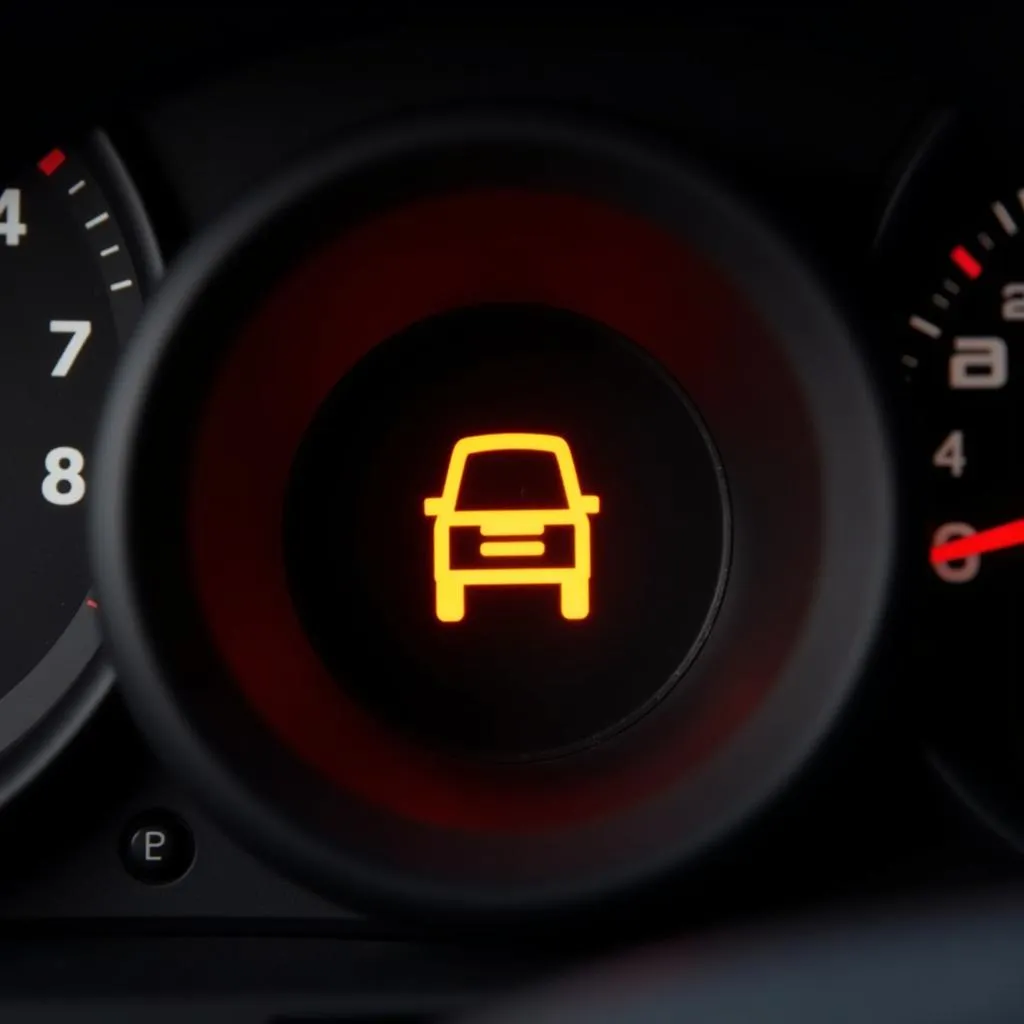The dreaded check engine light. It can strike fear into the heart of any driver, conjuring up images of costly repairs and stranded commutes. This often cryptic warning light is your car’s way of telling you something is amiss, but deciphering its meaning can feel like solving a riddle.
Don’t panic! While the check engine light can signal a range of issues, from minor to major, understanding its potential causes and knowing how to diagnose the problem can save you time, money, and unnecessary stress. This guide will walk you through common reasons your check engine light might be on, provide practical steps to diagnose the problem, and offer solutions to help get you back on the road with peace of mind.
Understanding Your Car’s Warning System
Modern cars are equipped with sophisticated onboard computers known as Engine Control Units (ECUs). These ECUs continuously monitor various sensors throughout your vehicle, ensuring optimal performance and compliance with emission standards. When a sensor detects an anomaly, it triggers a signal to the ECU, which then illuminates the check engine light on your dashboard.
The check engine light can illuminate in different ways, offering clues about the severity of the issue:
- Solid Check Engine Light: This typically indicates a minor problem that requires attention but may not warrant immediate action. However, it’s crucial to address the issue promptly to prevent potential damage or worsening of the problem.
- Flashing Check Engine Light: This signals a serious problem requiring immediate attention. A flashing check engine light often indicates a severe engine misfire, which can damage your catalytic converter or other critical components if not addressed promptly.
Common Causes of a Check Engine Light
The check engine light can be triggered by a wide array of issues. Here are some of the most common culprits:
- Loose or Faulty Gas Cap: A loose, damaged, or missing gas cap can disrupt the fuel system’s pressure, causing fuel vapor leaks and triggering the check engine light. This is one of the easiest and least expensive problems to fix.
- Oxygen Sensor Malfunction: Oxygen sensors measure the amount of oxygen in your car’s exhaust, helping the ECU adjust the air-fuel mixture for optimal combustion. A faulty oxygen sensor can lead to decreased fuel efficiency, increased emissions, and trigger the check engine light.
- Mass Air Flow Sensor (MAF) Issues: The MAF sensor measures the amount of air entering the engine, which is crucial for determining the correct fuel-air mixture. A dirty or faulty MAF sensor can result in poor engine performance, reduced fuel economy, and a check engine light.
- Catalytic Converter Problems: The catalytic converter plays a vital role in reducing harmful emissions from your car’s exhaust. A failing catalytic converter can cause decreased engine performance, a foul-smelling exhaust, and trigger the check engine light.
- Spark Plug or Ignition System Failure: Spark plugs ignite the air-fuel mixture in the engine cylinders, while the ignition system provides the spark. Worn-out spark plugs, faulty ignition coils, or other ignition system problems can lead to engine misfires, reduced power, and a check engine light.
Diagnosing the Check Engine Light
While a mechanic can accurately diagnose the check engine light using professional diagnostic tools, there are steps you can take to understand the problem better before heading to the shop.
1. Check Your Gas Cap
As mentioned earlier, a loose or damaged gas cap is a common culprit for a check engine light. Ensure your gas cap is securely fastened. If the cap is damaged or missing, replace it with a new one.
2. Visual Inspection
Open your car’s hood and perform a visual inspection. Look for any loose or disconnected wires, cracked hoses, or signs of damage. Pay attention to areas around the engine, battery, and air filter.
3. OBD-II Scanner
An OBD-II scanner is an invaluable tool for diagnosing check engine lights. These affordable devices plug into your car’s OBD-II port, usually located under the dashboard on the driver’s side, and can read the diagnostic trouble codes (DTCs) stored in the ECU.
Once you have the DTCs, you can:
- Research the Codes Online: Numerous websites and forums provide information about specific DTCs and their potential causes.
- Consult a Repair Manual: Your car’s repair manual will have a section dedicated to DTCs and their interpretations.
4. Seek Professional Help
If the check engine light is flashing, you’ve exhausted basic troubleshooting steps, or the DTCs point to a complex issue, it’s best to seek professional help from a qualified mechanic. They have the expertise, tools, and knowledge to diagnose and repair the problem efficiently and effectively.
Addressing the Issue
Once you’ve diagnosed the problem behind the check engine light, you can address the issue by:
- DIY Repair: Simple fixes like replacing a gas cap, air filter, or spark plugs can often be tackled by those with basic mechanical skills.
- Professional Repair: More complex issues, such as faulty sensors, catalytic converter problems, or ignition system failures, typically require professional repair by a qualified mechanic.
Remember, addressing the check engine light promptly can save you time, money, and potential headaches down the road.
Tips for Preventing Future Check Engine Lights
While you can’t entirely eliminate the possibility of future check engine lights, following these preventive measures can significantly reduce their occurrence:
- Regular Maintenance: Adhering to your car’s recommended maintenance schedule, including oil changes, air filter replacements, and spark plug replacements, can go a long way in preventing check engine lights.
- Quality Fuel and Fluids: Using high-quality fuel and fluids, as recommended by your car’s manufacturer, can contribute to optimal engine performance and longevity.
- Careful Driving Habits: Avoid aggressive driving, rapid acceleration, and hard braking, as these practices can put unnecessary stress on your car’s engine and other components.
Conclusion
The check engine light, while often a source of anxiety for drivers, shouldn’t be ignored. Understanding its potential causes, learning basic diagnostic techniques, and addressing the issue promptly can help you stay ahead of potential problems and keep your car running smoothly. Remember, regular maintenance and proactive care are your best allies in preventing future check engine lights and ensuring a safe and enjoyable driving experience.
FAQs
1. Can I still drive my car with the check engine light on?
It depends. A solid check engine light might indicate a minor issue, but it’s best to get it checked soon. A flashing check engine light, however, signals a serious problem and requires immediate attention.
2. How much does it cost to fix a check engine light?
The cost varies widely depending on the underlying issue. Simple fixes like a loose gas cap can be inexpensive, while major repairs like a catalytic converter replacement can be costly.
3. Can I use an OBD-II scanner myself?
Yes, OBD-II scanners are user-friendly and widely available. They plug into your car’s OBD-II port and can read diagnostic trouble codes.
4. How often should I get my car serviced?
Refer to your car’s owner’s manual for recommended maintenance schedules. Generally, it’s a good idea to have your car serviced at least once a year or every 12,000 miles.
5. Can a bad battery cause the check engine light to come on?
While rare, a failing battery can sometimes cause voltage fluctuations that trigger the check engine light.
Still Have Questions?
We’re here to help! For expert advice and support, contact us via WhatsApp at +1(641)206-8880 or email us at [email protected]. Our team of car repair specialists is available 24/7 to assist you.
Need more information about car repair? Check out our other helpful articles on front light car repair.



